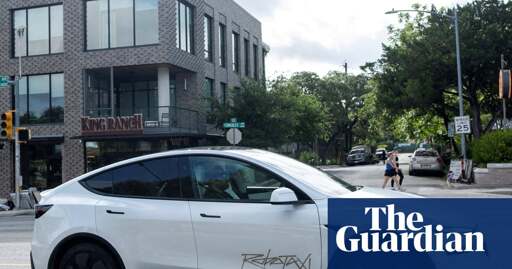The company’s rollout of its new driverless cars has gotten off to a wobbly start – and rival Waymo remains well ahead
After years of promising investors that millions of Tesla robotaxis would soon fill the streets, Elon Musk debuted his driverless car service in a limited public rollout in Austin, Texas. It did not go smoothly.
The 22 June launch initially appeared successful enough, with a flood of videos from pro-Tesla social media influencers praising the service and sharing footage of their rides. Musk celebrated it as a triumph, and the following day, Tesla’s stock rose nearly 10%.
What quickly became apparent, however, was that the same influencer videos Musk promoted also depicted the self-driving cars appearing to break traffic laws or struggle to properly function. By Tuesday, the National Highway Traffic Safety Administration (NHTSA) had opened an investigation into the service and requested information from Tesla on the incidents.



Most drivers are good at driving, terrible at being good people. So it’s not like you get cut off a lot, and there is less texting and driving than in other places, but there are more people road raging. I’ve seen someone getting brake checked by police, and I’ve also seen someone brake checking police.
Traffic jams happen, but it’s not LA level. The roads are terrible though. The motorway that this thing is on is notoriously unsafe because it has much tighter turns that it should have, and it’s rated 110 kmh rather than 130 as a result, and that is still too fast.
[x] doubt. :P
but that’s just because I assume everyone is a terrible driver. Around here, we have people struggling with the whole zipper merge thing, though.
In much of Europe you don’t need a car to live, so the training requirements to get a driving licence are higher.